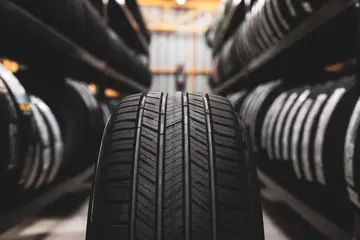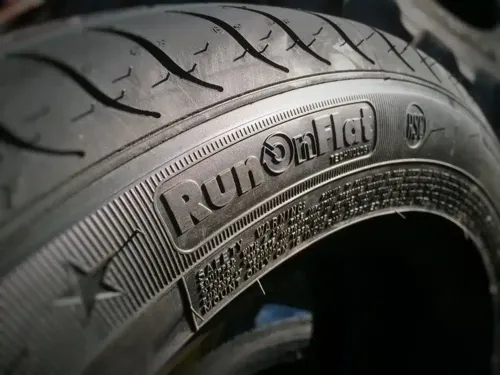Tyre ratings explained
Learn about tyre ratings, including speed, load, and efficiency ratings.
Posted on

When it comes to buying new tyres for your vehicle, it’s important to understand the different tyre ratings. Tyre ratings cover various aspects, such as speed, load capacity, and efficiency, which affect your vehicle’s performance, safety, and fuel economy. In this guide, we’ll break down tyre ratings and explain how to choose the right tyres based on these crucial factors.
Tyre ratings are markings found on the tyre’s sidewall that provide important information about the tyre's capabilities. These ratings help drivers choose tyres that are appropriate for their vehicle and driving style. The key tyre ratings include:
- Speed Rating: The maximum speed a tyre can safely maintain. Find out more about speed rating here.
- Load Index: The maximum weight a tyre can carry.
- Efficiency Ratings: Includes fuel efficiency, wet grip, and noise levels.
1. Load Index
The load index is a number that indicates the maximum weight a tyre can support when fully inflated. You’ll find the load index number on the tyre’s sidewall next to the tyre size. For example, in 225/45R17 94V, the “94” is the load index.
Here’s a table showing load index values and their corresponding load capacities:
| Load Index | Max Load per Tyre (kg) |
|---|---|
| 85 | 515 |
| 88 | 560 |
| 91 | 615 |
| 94 | 670 |
| 97 | 730 |
| 100 | 800 |
It’s crucial to choose tyres with the appropriate load index for your vehicle, especially if you frequently carry heavy loads or drive long distances. Overloading tyres with a lower load index than recommended can lead to premature wear and increase the risk of tyre failure.
3. Tyre Efficiency Ratings
Tyre efficiency ratings typically refer to fuel efficiency, wet grip, and noise levels. These ratings are often displayed on a label or chart when you purchase new tyres and give you a quick understanding of how the tyre performs in these key areas.

Fuel Efficiency Rating
The fuel efficiency rating measures how much energy (fuel) the tyre consumes as it rolls. Tyres that reduce rolling resistance are rated higher for fuel efficiency and can help you save on fuel costs. The rating scale ranges from A (best) to E (poorest).
- A-rated tyres are the most fuel-efficient, meaning they consume less energy and help lower your fuel costs.
- E-rated tyres have more rolling resistance and consume more fuel.
Wet Grip Rating
The wet grip rating measures how well a tyre stops on wet surfaces, which is crucial for safety in rainy conditions. Similar to fuel efficiency, the wet grip rating ranges from A (best) to E (poorest).
- A-rated tyres provide the shortest braking distances on wet roads.
- E-rated tyres have longer braking distances and may not perform as well in wet conditions.
Noise Rating
The noise level rating indicates the amount of noise the tyre generates when rolling. It is measured in decibels (dB), with lower decibel levels indicating quieter tyres. The rating is typically represented by a bar system or sound waves:
- 1 bar: The tyre is quieter than the average tyre.
- 2 bar: The tyre produces moderate noise.
- 3 bar: The tyre is noisier than average.
Quieter tyres can enhance your driving comfort, especially on long trips, while tyres with higher noise ratings may be less comfortable in terms of road noise.
How to Choose the Right Tyre Ratings for Your Vehicle
When selecting tyres for your vehicle, it's important to choose the right combination of ratings based on your driving habits, vehicle type, and environment. Here are a few tips:
- Check Your Vehicle’s Specifications: Always refer to your vehicle’s manual or tyre placard for the recommended tyre size, load index, and speed rating.
- Consider Your Driving Conditions: If you drive frequently in wet conditions, look for tyres with a high wet grip rating. For drivers on long motorway commutes, higher speed ratings and fuel efficiency are key considerations.
- Factor in Load Requirements: If you regularly carry heavy loads, ensure your tyres have a load index that can handle the extra weight.
- Look for Quiet Tyres: If you value comfort and a quieter ride, choose tyres with a lower noise rating.










